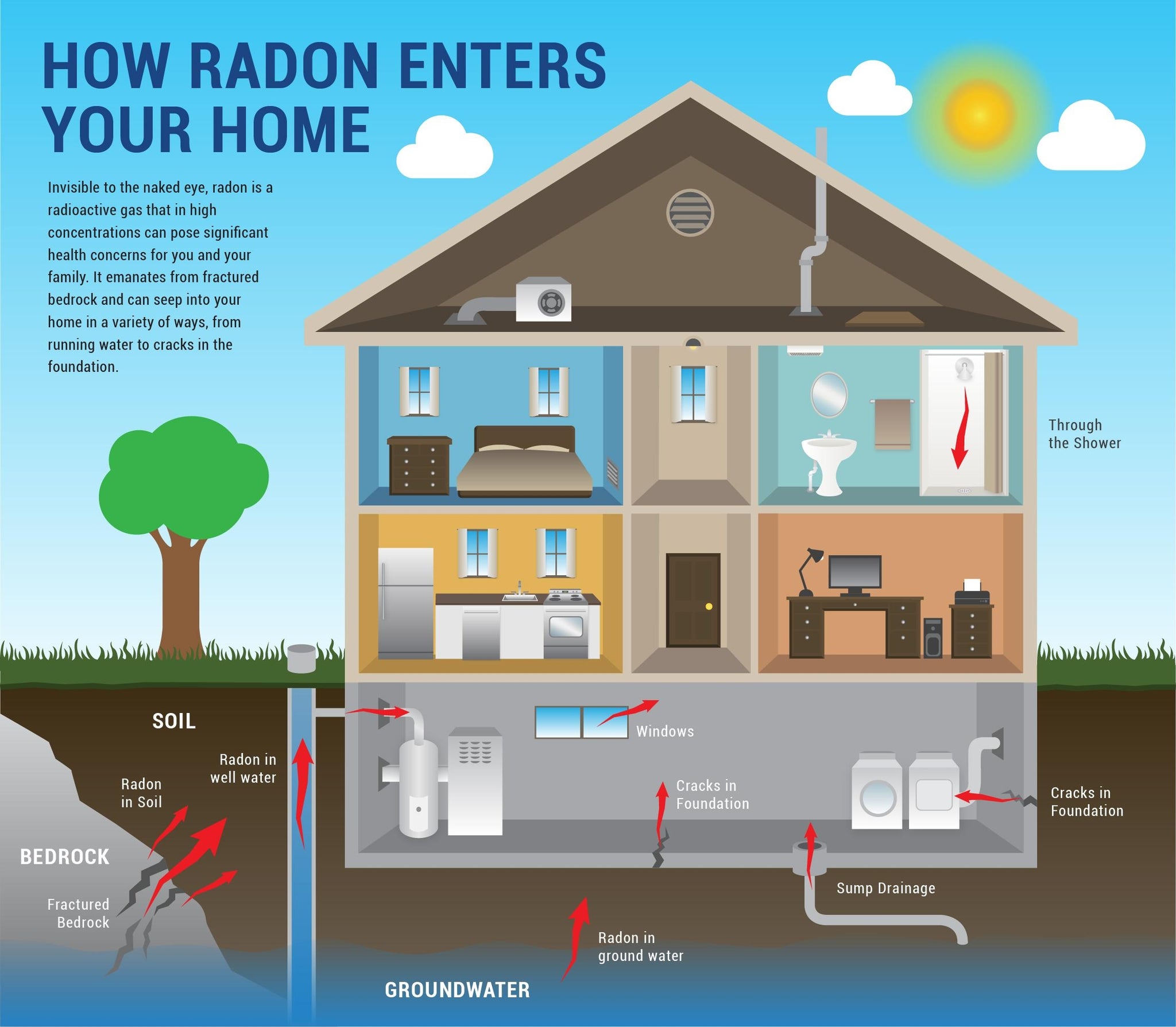Radon: The Ill Effects
How does radon affect my health?
Radon is a radioactive gas that occurs naturally in the environment, particularly in soil, rock, and groundwater. It is odorless, tasteless, and invisible, which makes it difficult to detect without specialized equipment. Radon can enter homes and buildings through cracks in the foundation, gaps around pipes, and other openings.
Exposure to high levels of radon over a long period of time can increase the risk of developing lung cancer. Radon decays into radioactive particles that can get trapped in your lungs when you breathe, damaging lung tissue and potentially leading to cancer.
The risk of developing lung cancer from radon exposure depends on the level of radon in the air and the duration of exposure. It’s important to test your home for radon and take steps to reduce radon levels if they are high. If the tests come back positive, you should discuss the risks with a specialist.
How can I protect myself from radon?
To protect yourself from radon exposure, you can take the following steps:
- Test Your Home: Test your home for radon, especially in the lowest livable level of the home, such as the basement or ground floor. Radon test kits are available for purchase at hardware stores or online, or you can hire a professional to test for radon.
- Radon Mitigation: If high levels of radon are found in your home (above 4 picocuries per liter (pCi/L) – the EPA’s recommended action level), consider installing a radon mitigation system. These systems can help reduce radon levels by venting radon gas from the soil beneath your home to the outside.
- Seal Cracks and Openings: Seal cracks in the foundation and walls of your home to prevent radon from entering. Pay special attention to areas where pipes and wires enter the home, as these can be common entry points for radon.
- Ventilation: Ensure good ventilation in your home. Opening windows and using fans can help dilute radon levels, especially in areas where radon buildup is more likely.
- New Home Construction: If you’re building a new home, consider radon-resistant construction techniques, which can help prevent radon from entering your home in the first place.
- Regular Testing: Radon levels can change over time, so it’s a good idea to test your home regularly, especially if you’ve made changes to your home’s foundation or ventilation system.




